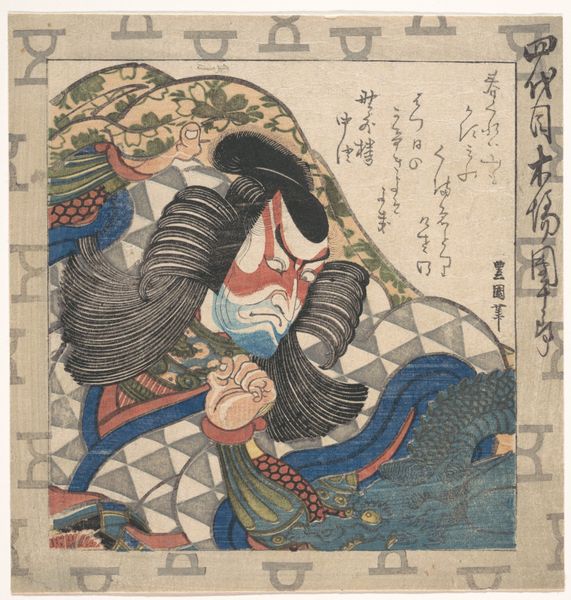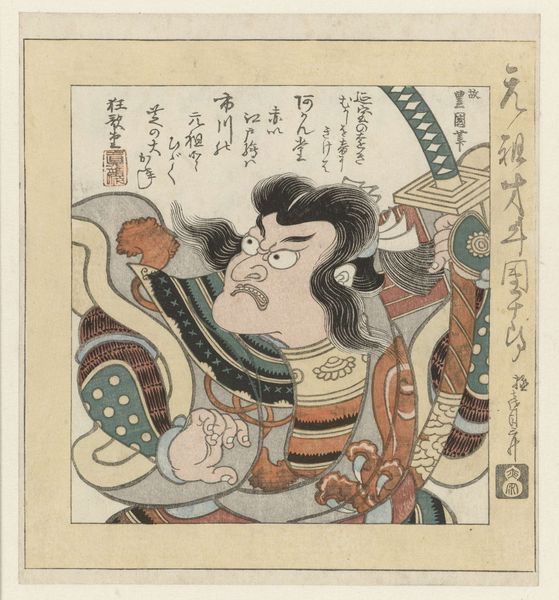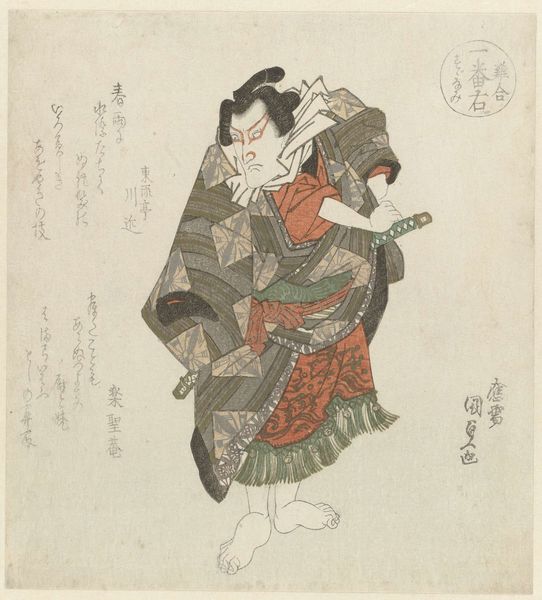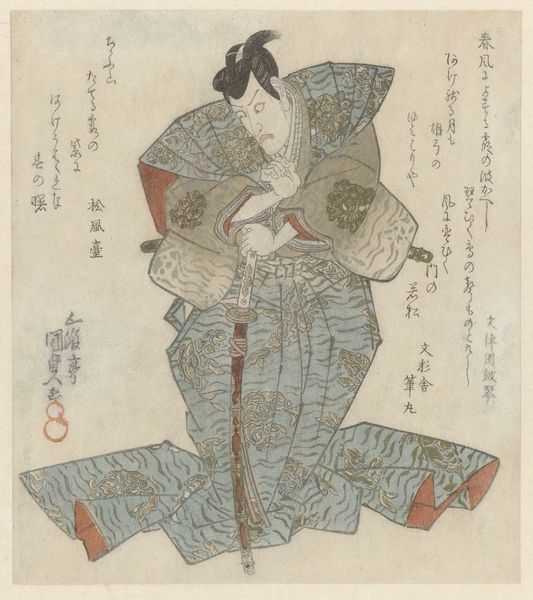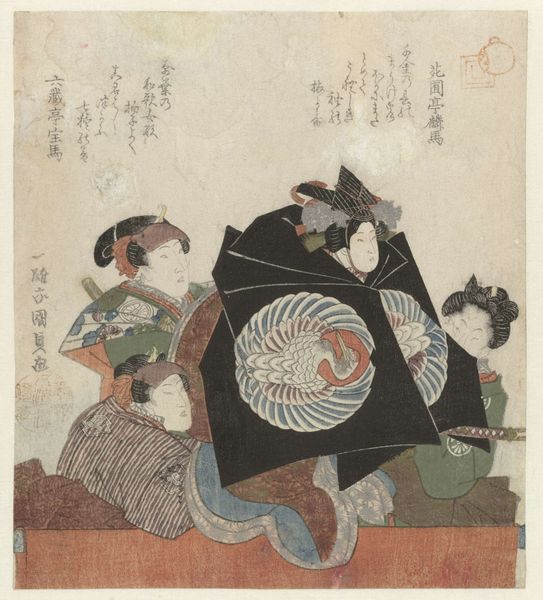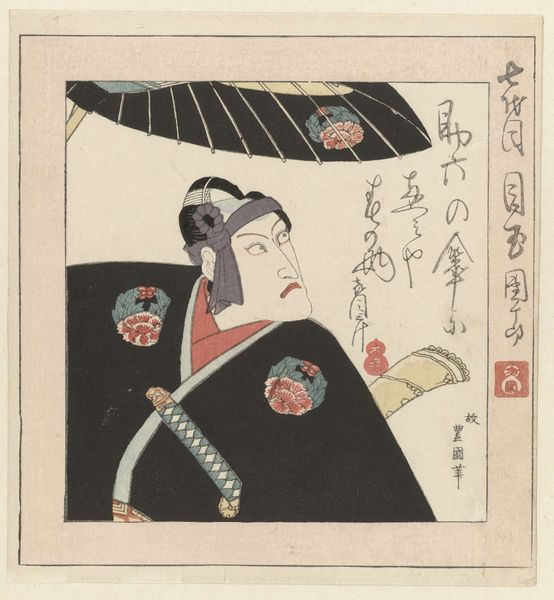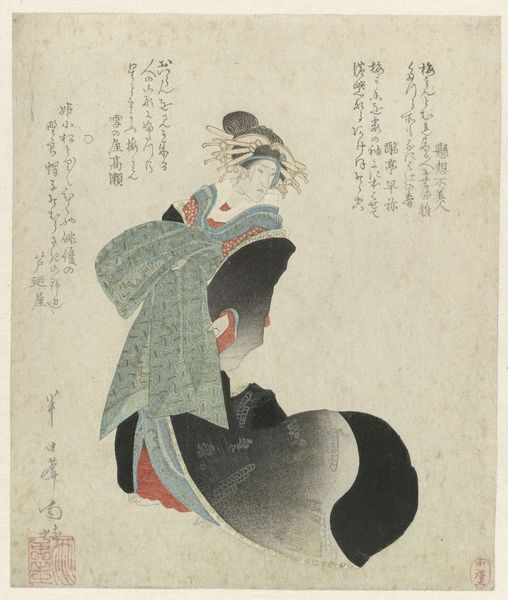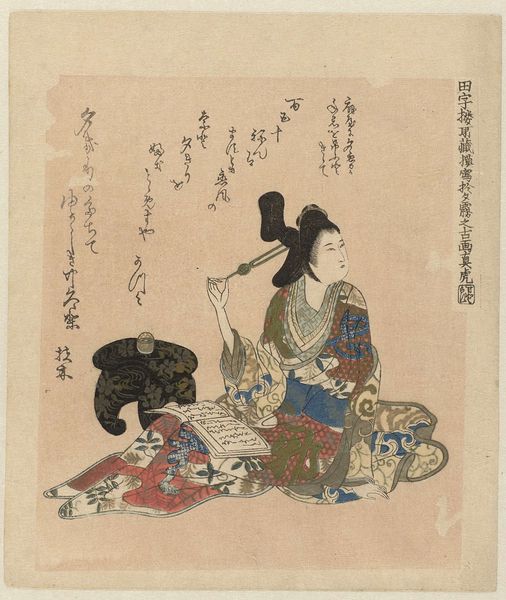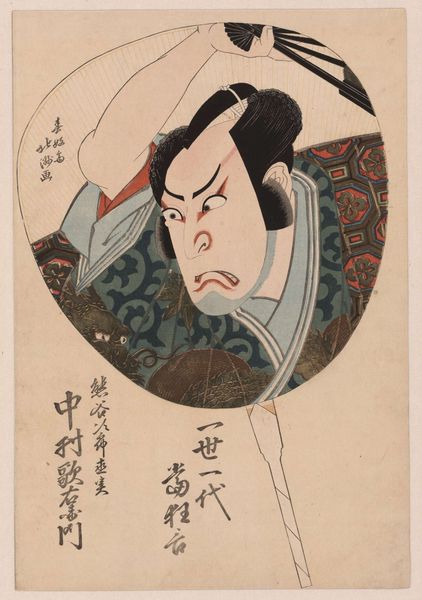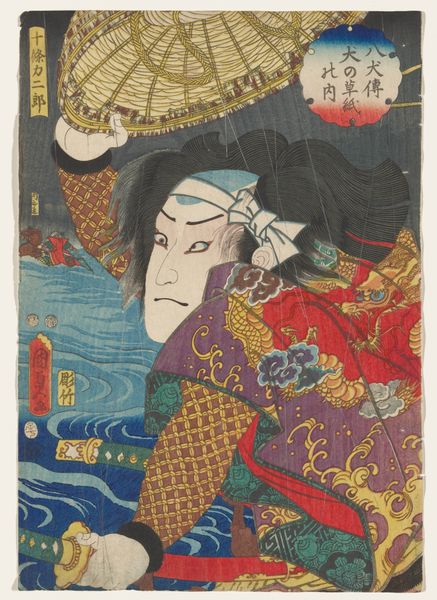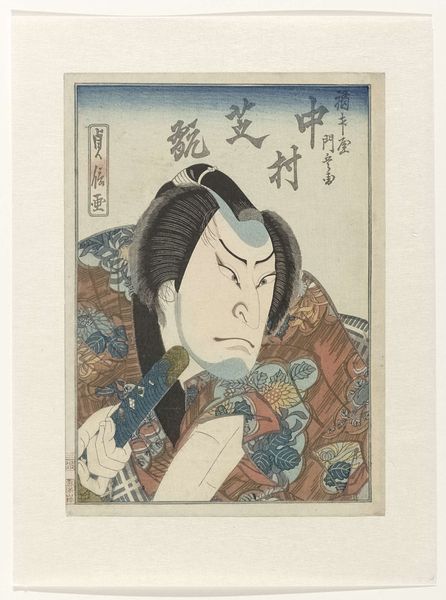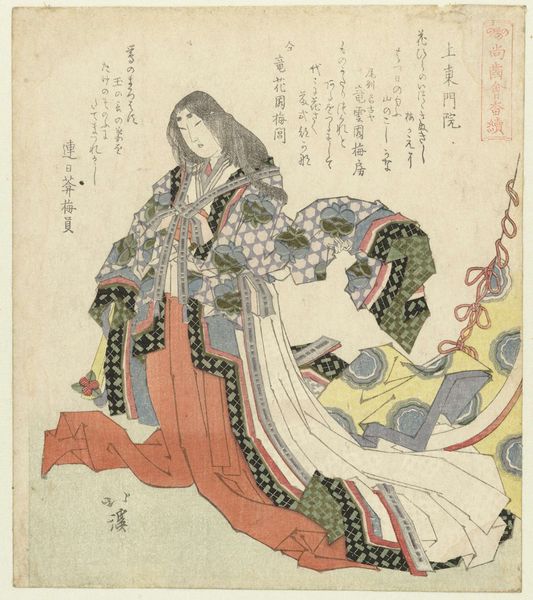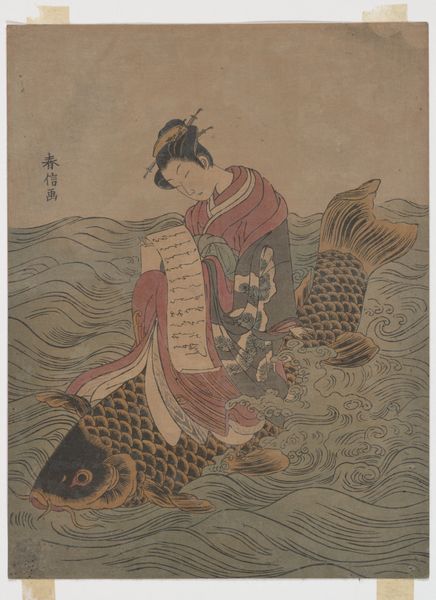
print, woodblock-print
#
portrait
# print
#
caricature
#
asian-art
#
caricature
#
ukiyo-e
#
figuration
#
woodblock-print
#
genre-painting
Dimensions: height 200 mm, width 182 mm
Copyright: Rijks Museum: Open Domain
Curator: This captivating woodblock print, "The Kabuki Actor Ichikawa Danjūrō IV," was created by Utagawa Toyokuni I in 1825. The artwork is currently housed in the Rijksmuseum. Editor: It strikes me immediately as quite stylized, almost mask-like in its depiction of the actor. There’s a tension, isn't there, between the delicate line work and the exaggerated features? Curator: The tension you perceive comes alive from the semiotic weight imbued in Kabuki itself—a formalized Japanese dance-drama tradition. The precise gestures and facial expressions are coded to convey meaning, amplified through stage makeup known as kesho. Editor: And it looks as if this piece functions as caricature as well as a theatrical portrait, I can only imagine the significance of this character and the weight of his expression, perhaps an attempt at humor? It seems more of a satire. Curator: Caricature offers visual commentary. Note how Toyokuni distorts specific features to amplify underlying social or political points. The exaggeration of features like the jaw and mouth can communicate societal critiques through established symbolic understanding of gesture and facial posture within performance. Editor: Speaking of the form, Ukiyo-e prints became incredibly popular in the Edo period, making art more accessible. How might this artwork participate in cultural exchange and identity, then, with the representation of actors and dramatic forms through widely distributed artworks? Curator: The genius of ukiyo-e prints, is in the ability to democratize and proliferate visual culture. They serve as visual documents and disseminate knowledge. This one embodies its themes and its method of production, reflecting social performances as both lived experiences and reproducible visual imagery. Editor: So, what we are looking at really operates on many socio-cultural layers—a cultural snapshot and theatrical poster, all in one beautiful, provocative piece. Curator: Yes, it's more than a pretty picture, indeed—the material and the message of Kabuki allow us insight into the aesthetics of visual communication as political articulation and symbolic statement.
Comments
No comments
Be the first to comment and join the conversation on the ultimate creative platform.
